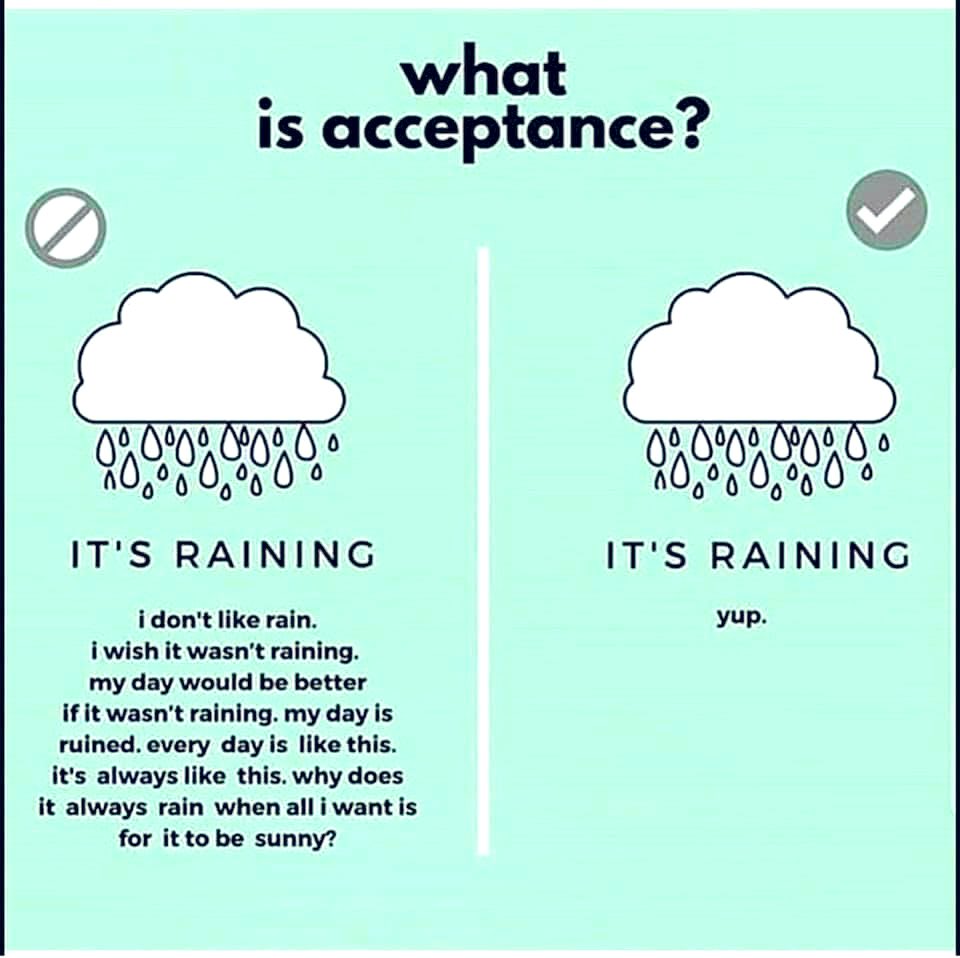This is one of an occasional series of articles about Acceptance and Commitment Therapy (ACT), one of the therapeutic approaches that I often use in my practice. The first article provided a general overview of ACT. In this article, I discuss Acceptance, one of the six core principles of ACT. Next up: Cognitive Defusion.
——————————————————————-
Individuals often seek therapy when they are stuck repeating harmful behaviors and experiencing negative emotions. Usually, they have tried to control their actions or suppress their feelings on their own with little success. They come to me expecting that I will help them to stop doing what they are doing and feeling the way they are feeling.
Certainly, that may be a hoped-for outcome but depending on the client and their needs, there are different paths for getting there. Therapeutic techniques like cognitive behavioral therapy, indeed focus on helping clients to challenge cognitive distortions and behaviors and change them. In long-term psychotherapy, the therapist’s goal is typically to assist clients in coming to an understanding of their past and the underlying reasons for their negative emotions and behaviors and then, address the root causes.
Acceptance and Commitment Therapy is different. The primary objective of ACT is not to stop or change emotions and behaviors. Instead, it is to acknowledge and observe the negative in order to move forward. Thus, the first principle of ACT is Acceptance.
What is Acceptance?
According to ACT, when an individual opens themselves up to the negative emotions and accepts that they are present, rather than pushing them away, running from them or suppressing them, these emotions lose their power. The individual can recognize them and move past them more easily rather than continuing to use their energy to struggle against them.

Through a variety of mindfulness strategies, including meditation, visualization and breathing exercises, individuals are encouraged to become aware of their negative emotions, observe and acknowledge them without giving in to the impulses to act on them or escape them.
Acceptance Scenario
In an article published by Australia’s Mental Health Academy, the authors present a scenario where a therapist guides the client toward Acceptance:
A therapy client states that they feel anxious about going out and socializing. They say they are afraid that they won’t have anything to say or that they will stay something dumb.
With certain treatment approaches, the therapist might respond by working with the client to dispute the negative beliefs that they are a poor conversationalist or boring and help them to replace their anxious thoughts with positive, affirming ones.
Using ACT, however, the therapist might ask the client to imagine that they are about to meet up with a group of people. The therapist would then instruct the client to scan their body, observing where they feel the anxiety most intensely. If the client reports experiencing it as a huge lump in their throat, the therapist might ask them to observe the sensation of the lump as if they were a scientist who had never seen anything like it before. The therapist might encourage the client to try to visualize the sensation, notice the shape, weight, temperature and other aspects of it. The client might be invited to breathe into the lump, making room for it, allowing it to be there even though the feeling is unpleasant, and the client understandably doesn’t like it. At the end of the session the client might be given homework to “practice observing the lump of anxiety: not trying to get rid of it, but just letting the sensation of the lump, and possibly other sensations associated with anxiety, come and go as they pleased: acknowledging them, not resisting them, but also not engaging with them.” The next step in the exercise would then be for the therapist to work with the client to visualize letting go of the struggle with the negative and move toward Acceptance.
Achieving the principle of Acceptance is not easy. It takes patience and practice but can provide invaluable skills for getting unstuck and moving forward toward healthier emotions and behaviors. If you are interested in learning more about ACT, contact me.

